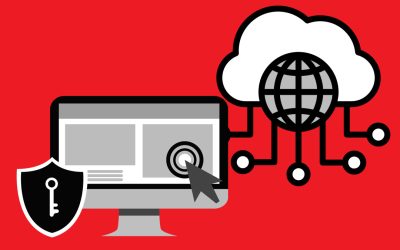The digital world. A world where every bit of information is represented by 1’s and 0’s, traveling the digital highway on a global average speed of less than 100 Megabits per second. It is a world that never sleeps, where identity and anonymity can thrive; where public and private spaces can be created in a few seconds; and a world that allows a constant exchange of information for almost every purpose. Information that contains a person’s identity, bank accounts, credit card details, business deals, military secrets, and a whole lot more, all ripe for picking. It only takes one malicious actor to send a mischievous string of commands and poof! Information is either hacked, hijacked, or destroyed.
This brings us to a critical thought: with the increasing amount of data being generated and transmitted over the internet, the need for effective cybersecurity measures has never been more critical; but can we really be 100% safe?
The answer is a resounding NO.
There is currently no perfect code thus there is currently no perfect system. Despite the best efforts of cybersecurity professionals and the implementation of various security measures, it is impossible to guarantee complete protection against cyber threats.
Factors That Require Cybersecurity Professionals
One of the main reasons for this is that technology is continuously evolving. Cyber attackers are constantly finding new ways to overcome security measures. Determined attackers can breach even the most sophisticated security systems. This is a significant factor when choosing a cybersecurity system. It should have the capability to evolve and adapt quickly, and ideally be a step or two ahead of cyber-attackers.
Another factor that makes achieving 100% cybersecurity impossible is human error. Employees can unintentionally compromise security measures by falling prey to phishing scams, using weak passwords, or failing to update software. This makes cybersecurity training necessary. Simply having a cybersecurity system in place is not enough, there should be experts in place as well that will constantly keep employees well-informed and trained on cybersecurity.
It is also important to note that cybersecurity measures can have unintended consequences. For example, implementing strict security measures can cause inconvenience for employees and customers, leading to reduced productivity and customer satisfaction. It is crucial to strike a balance between security and usability. As such, it is important to have a cybersecurity partner that will understand your business and deliver the balance it needs.
Furthermore, external attackers are not the only threats to cybersecurity. Insider threats, including employees or contractors with malicious intent or accidentally causing security breaches, can be just as dangerous. This highlights the importance of not only having robust security measures but also implementing strict access controls and monitoring systems to detect suspicious activity.
Moreover, cybersecurity is not a one-time effort. It requires continuous monitoring and updating to keep up with the ever-evolving threat landscape. Regularly reviewing and updating cybersecurity measures ensure that they are effective against the latest threats.
Cybersecurity Investment
While 100% protection may be unattainable, it is still essential to implement cybersecurity measures to reduce the likelihood and impact of a successful cyber-attack. Effective cybersecurity measures can include cyber threat intelligence and response, network segmentation, encryption, access controls, regular software updates, and employee training on cybersecurity best practices.
It is also crucial to have a plan in place to respond to a cyber-attack. This can include regularly backing up critical data, having a disaster recovery plan, and testing the plan to ensure it is effective.
Hold on, the answer may be NO, but not investing in proper cybersecurity is worse?
In an article published in the Harvard Business Review, it was pointed out that “the odds are that your organization will be hacked and hacked again.” This supports the notion that 100% security is currently a myth. However, it emphasizes that the focus should be on reducing the likelihood and impact of a successful cyber-attack. This focus alone is a critical reason to invest more on cybersecurity. It is better to have a robust cyber threat intelligence and incident response system than not have one at all.
Conclusion
While current cybersecurity measures cannot guarantee 100% safety, it is essential to have one rather than none. 85 to 90% cyber-safe is better than 0%. Cyber attackers are constantly evolving their methods to overcome security measures, and human error can also compromise security. However, by prioritizing critical data, striking a balance between security and usability, and having a plan in place to respond to a cyber-attack, organizations can reduce the likelihood and impact of successful attacks. The key is to remain vigilant, adapt to new threats, and continuously improve cybersecurity measures to stay one step ahead of attackers. The focus is to reduce the likelihood and impact of a successful cyber-attack.
About IPV Network
Since 2016, IPV Network has been a trusted partner of leading enterprises in the Philippines. It brings the best-of-breed cybersecurity solutions. IPV network helps businesses identify, protect, detect, respond, and recover from cyber threats. Email us at [email protected] or call (02) 8564 0626 to get your FREE cybersecurity posture assessment!
Sources:
https://www.speedtest.net/global-index
https://hbr.org/2017/12/you-cant-secure-100-of-your-data-100-of-the-time



